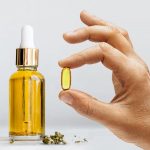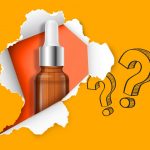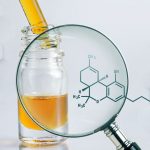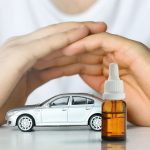In this article we’re going to discuss the immense importance of CBD bioavailability, and how different consumption methods have different effectiveness.
Before we get into the techniques that help us maximize the overall effectiveness of CBD, we should first define bioavailability.
What is CBD Bioavailability?
The effectiveness of any CBD consumption method (such as vaping, CBD edibles, and sublingual CBD oil) is dependent on how much CBD reaches the bloodstream.
Once CBD molecules reach the blood, they are then transported to various receptors throughout the body, and are able to produce their effects throughout the body.
Different CBD consumption methods have different bioavailability, which means that the total amount of CBD molecules that reach the bloodstream differs from method to method.
This also means that some consumption methods are more effective than others, because they allow more CBD molecules to reach the blood and affect our body.
For instance, if someone would hypothetically use CBD with a hypodermic needle,100% of the taken CBD would reach the bloodstream, because the intravenous method directly delivers a substance into the bloodstream.
With all other consumption methods a portion of the consumed CBD is “lost in transportation”, which means the amount of the consumed CBD is not the same as the amount that ultimately reaches the bloodstream.
What Is the Bioavailability of CBD Oil Taken Sublingually?
The sublingual method of administration transports CBD into the bloodstream through tissues and veins that are located underneath the tongue.
The current scientific understanding is that the sublingual CBD bioavailability ranges from 12% to 35%, which means if someone uses 10mg of CBD sublingually, somewhere between 1.2mg and 3.5mg of CBD will ultimately reach the bloodstream and become active.
What Is the Bioavailability of Oral CBD?
Consuming CBD orally mainly refers to CBD capsules and CBD edibles.
The bioavailability of oral CBD administration ranges between 13% and 19%, which is significantly lower compared to the sublingual method.
But when it comes to oral CBD consumption, it’s very important to point out that consuming fatty foods increases CBD bioavailability.
A 2019 research compared CBD absorption in patients on an empty stomach, versus when a CBD dose was taken with a fatty breakfast.
The study found that on average CBD levels in the blood increased four-times when high-fat food was consumed at the same time as the CBD dose.
So, if you’re using CBD orally, you can either infuse your CBD with treats like cookies or brownies, or you can eat a fatty meal separately from your CBD dose, it’s only important that you do it simultaneously.
What Is the Bioavailability of Vaping (And Smoking) CBD?
As of yet, no studies were performed on the bioavailability of vaping CBD.
But, considering that with both vaping and smoking CBD enters the bloodstream through the lungs, it’s most likely safe to say that the bioavailability of these two methods would be similar to an extent.
This 2018 research found that the bioavailability of CBD following smoking was 31%, which means that approximately one third of the total CBD reached the bloodstream in the end.
What Is the Bioavailability of CBD Topicals?
This consumption method doesn’t allow the CBD to enter the bloodstream, because CBD topicals only act locally by activating the receptors in the area where the cream was applied.








